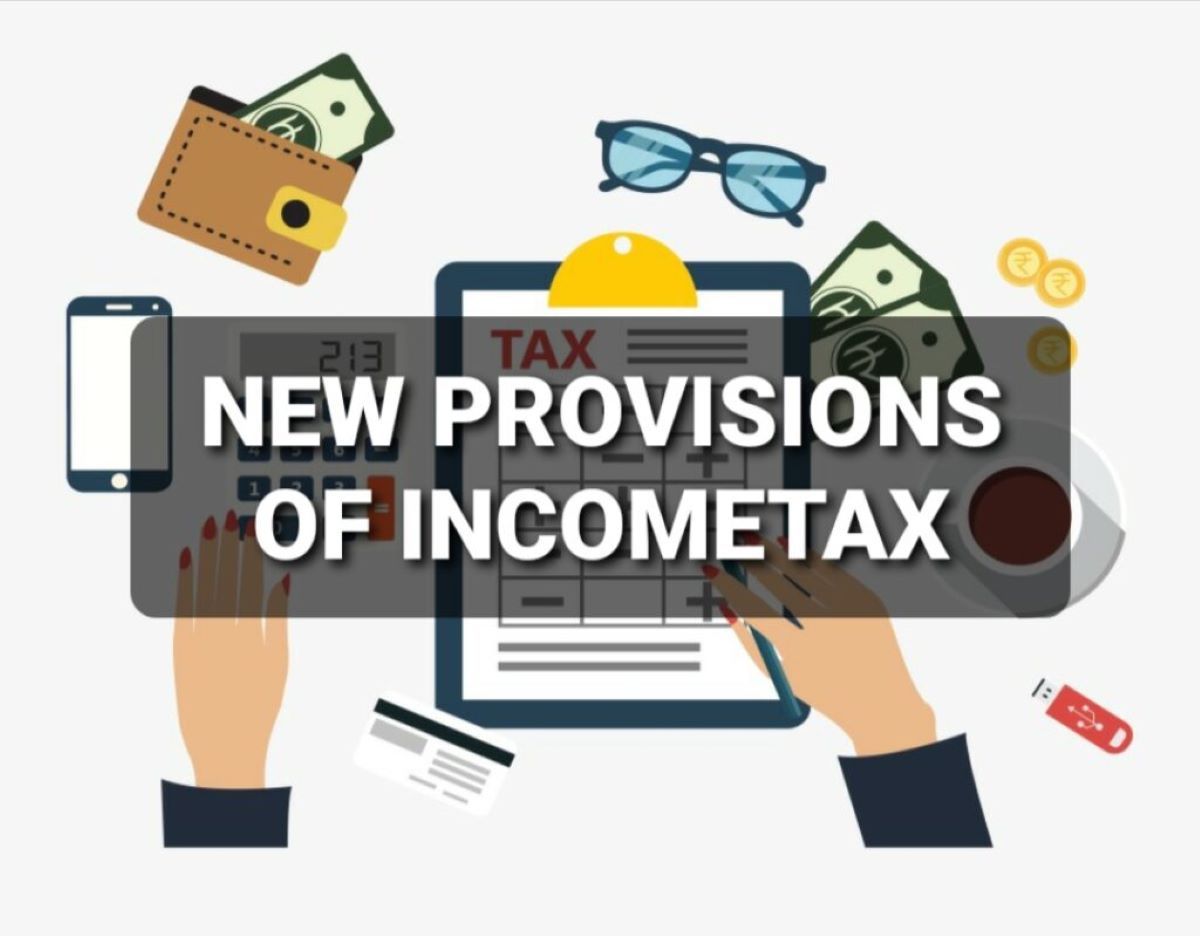Home>Finance>What Is The Difference Between A Credit Score And A Credit Rating


Finance
What Is The Difference Between A Credit Score And A Credit Rating
Modified: March 6, 2024
Learn the key distinctions between credit score and credit rating in the realm of finance. Gain insights into how they impact your financial standing.
(Many of the links in this article redirect to a specific reviewed product. Your purchase of these products through affiliate links helps to generate commission for LiveWell, at no extra cost. Learn more)
Table of Contents
- Introduction
- Definition of Credit Score
- Definition of Credit Rating
- Factors Affecting Credit Score
- Factors Affecting Credit Rating
- Purpose and Use of Credit Score
- Purpose and Use of Credit Rating
- Differences in Calculation Methodology
- Differences in Reporting Agencies
- Impact on Loan Applications
- Importance of Monitoring Credit Score and Credit Rating
- Conclusion
Introduction
Understanding the difference between a credit score and a credit rating is essential for anyone looking to manage their finances effectively. These two terms are often used interchangeably, but they actually represent distinct concepts within the world of finance.
A credit score is a numerical representation of an individual’s creditworthiness. It is a three-digit number that helps lenders assess the risk of offering credit to a borrower. On the other hand, a credit rating is an evaluation of an individual’s creditworthiness and the likelihood of defaulting on their financial obligations.
Both credit scores and credit ratings play a crucial role in determining eligibility for loans, credit cards, mortgages, and other forms of credit. They provide lenders with insight into an individual’s financial history, payment habits, and ability to manage debt. This information helps lenders make informed decisions about lending money and setting interest rates.
In this article, we will explore the differences between credit scores and credit ratings, the factors that affect them, their purposes and uses, as well as their impact on loan applications. Additionally, we will highlight the importance of monitoring both credit scores and credit ratings to maintain a healthy financial profile.
Definition of Credit Score
A credit score is a numerical representation of an individual’s creditworthiness. It is a tool used by lenders to assess the risk of extending credit to a borrower. A credit score is typically a three-digit number that is calculated based on various factors relating to an individual’s credit history and financial behavior.
The most commonly used credit scoring model is the FICO score, which ranges from 300 to 850. The higher the credit score, the better the individual’s creditworthiness is considered to be. A high credit score indicates a lower risk of defaulting on financial obligations, making the individual more attractive to lenders.
The factors that impact a credit score may include:
- Payment History: The timeliness and consistency of an individual’s bill payments, including any missed or late payments.
- Credit Utilization: The percentage of available credit that is being utilized. High credit utilization may negatively impact the credit score.
- Length of Credit History: The length of time that an individual has been using credit. A longer credit history is generally viewed positively.
- Types of Credit: Having a mix of different types of credit, such as credit cards, loans, and mortgages, can positively impact the credit score.
- New Credit: Applying for or opening new credit accounts can temporarily lower a credit score.
It’s important to note that different credit scoring models may weigh these factors differently, and each lender may have their own specific criteria for evaluating creditworthiness.
A credit score is used by lenders to determine the terms of a loan or credit offer. Individuals with higher credit scores are more likely to be approved for loans and may receive more favorable interest rates and repayment terms. On the other hand, individuals with lower credit scores may face challenges in obtaining credit or may be subject to higher interest rates and stricter lending criteria.
Monitoring and improving your credit score is important for maintaining a healthy financial profile and maximizing your access to credit opportunities. Regularly checking your credit report for errors, paying bills on time, and keeping credit utilization low are some strategies for improving your credit score.
Definition of Credit Rating
A credit rating is an evaluation of an individual’s or entity’s creditworthiness and their ability to fulfill financial obligations. It is assigned by credit rating agencies, also known as credit bureaus, based on a comprehensive analysis of various factors such as financial history, income stability, debt levels, and repayment track record.
Credit ratings are typically given in letter grades or alphanumeric symbols, with each rating representing a different level of creditworthiness. The most common credit rating scale is the one developed by Standard & Poor’s (S&P), which ranges from AAA (highest rating) to D (default).
Unlike credit scores, which are focused on individuals, credit ratings are often used to assess the creditworthiness of corporations, municipalities, and even governments. The purpose of credit ratings is to provide investors, lenders, and other interested parties with an objective measure of credit quality, allowing them to make informed decisions regarding investments, loan approvals, and credit terms.
Credit rating agencies collect information from various sources, including financial statements, public records, interviews, and market research, to evaluate the creditworthiness of an entity. This evaluation takes into account factors such as the entity’s ability to generate revenue, manage debt, and meet financial obligations.
The credit rating assigned to an entity can have a significant impact on its ability to borrow money and its cost of borrowing. A higher credit rating indicates lower credit risk and may result in lower interest rates and more favorable loan terms. Conversely, a lower credit rating implies a higher risk of default and may lead to higher borrowing costs or limited access to credit.
It’s worth noting that credit ratings can change over time, reflecting changes in an entity’s financial health, economic conditions, or other relevant factors. Therefore, it’s important for entities to regularly monitor their credit ratings and take actions to improve their creditworthiness, such as maintaining a strong financial position, managing debt effectively, and demonstrating a consistent repayment history.
In summary, credit ratings provide an assessment of an entity’s creditworthiness and are used by investors and lenders to evaluate credit risk. They serve as a crucial tool for decision-making in the financial markets and have a significant impact on an entity’s ability to access credit and its cost of borrowing.
Factors Affecting Credit Score
Several factors come into play when determining an individual’s credit score. These factors are used by credit scoring models to assess an individual’s creditworthiness and likelihood of defaulting on financial obligations. Understanding these factors can help individuals maintain and improve their credit scores. Here are some of the key factors that can affect a credit score:
- Payment History: One of the most critical factors is an individual’s payment history. Late payments, missed payments, or defaulting on loans can significantly impact a credit score negatively. Making all payments on time is essential to maintain a good credit score.
- Credit Utilization: The percentage of available credit that an individual uses, also known as credit utilization, plays a vital role in credit scoring. High utilization, especially above 30%, can hurt a credit score. It is advisable to keep credit card balances low and use credit responsibly.
- Length of Credit History: The length of an individual’s credit history is also considered when determining a credit score. A longer credit history generally indicates a more stable financial track record, which can positively impact the credit score.
- Types of Credit: The mix of credit accounts an individual has, such as credit cards, loans, and mortgages, can influence the credit score. Having a diverse range of credit types, responsibly managed, may have a positive impact on the credit score.
- New Credit Applications: Applying for multiple new credit accounts within a short period can raise concerns for lenders and impact a credit score. It’s essential to be mindful of applying for credit only when necessary.
- Credit History Length: Closing old credit accounts can potentially harm a credit score as it shortens the credit history length. It is generally advisable to keep old credit accounts open unless there are compelling reasons to close them.
It is important to note that different credit scoring models may weigh these factors differently, and the impact of each factor may vary based on individual circumstances. Additionally, other factors, such as public records (bankruptcies, tax liens) and collections accounts, can also affect credit scores.
To maintain a good credit score, individuals should focus on making timely payments, keeping credit card balances low, and managing credit responsibly. Regularly monitoring credit reports from credit bureaus and addressing any inaccuracies or discrepancies can also help ensure the accuracy of credit scores.
By being aware of the factors that influence credit scores and taking proactive steps to maintain a positive credit history, individuals can strive to achieve and maintain good credit scores, which can open up opportunities for financial flexibility and favorable lending terms.
Factors Affecting Credit Rating
Credit ratings are assessments of an individual’s or entity’s creditworthiness and ability to fulfill financial obligations. These ratings are determined by credit rating agencies and evaluate various factors that can influence the creditworthiness of the subject. Understanding the factors affecting credit ratings is crucial for individuals and entities alike. Here are some key factors that can impact credit ratings:
- Financial History: The financial history of an individual or entity is a significant factor in determining credit ratings. This includes factors such as past defaults, bankruptcies, foreclosures, and late payments. Negative marks on the financial history can lead to lower credit ratings.
- Income Stability: The stability and consistency of an individual’s or entity’s income play a role in credit ratings. A steady and reliable income source indicates a higher ability to fulfill financial obligations and may result in a higher credit rating.
- Debt Levels: The amount of debt an individual or entity carries can affect credit ratings. High levels of debt, especially when compared to income or assets, can indicate financial risk and result in lower credit ratings.
- Repayment Track Record: The track record of making timely payments is crucial for credit ratings. Consistently making payments on time demonstrates financial responsibility, while missed or late payments can lower credit ratings.
- Industry and Economic Factors: Credit ratings can also be influenced by industry-specific and broader economic factors. For example, economic downturns or disruptions in a specific industry can negatively impact credit ratings for entities operating in those sectors.
- Leverage and Liquidity: The level of leverage, or the ratio of debt to assets, can impact credit ratings. High leverage indicates a higher risk of default, which can lower credit ratings. Additionally, having sufficient liquidity, such as cash reserves, can positively influence credit ratings as it demonstrates the ability to meet financial obligations.
- Legal and Regulatory Environment: The legal and regulatory environment in which an entity operates can also affect credit ratings. Compliance with regulations and legal obligations, as well as the industry’s adherence to governance best practices, can impact credit ratings.
It’s important to note that credit rating agencies employ their own methodologies and criteria to assess creditworthiness, and the specific weight given to each factor may vary. Understanding these factors can help individuals and entities take steps to improve their credit ratings, such as managing debt levels, maintaining a consistent repayment track record, and adhering to relevant industry regulations.
Regularly monitoring credit ratings and addressing any negative factors can help individuals and entities maintain a positive credit profile. This, in turn, can enhance their ability to secure financing, negotiate better terms, and demonstrate financial stability in the eyes of lenders, investors, and business partners.
Purpose and Use of Credit Score
The purpose of a credit score is to provide lenders, creditors, and financial institutions with an objective measure of an individual’s creditworthiness. A credit score serves as a tool for assessing the risk of extending credit to a borrower and is used in various financial decisions. Here are some key purposes and uses of credit scores:
- Lending Decisions: One of the primary uses of credit scores is to aid lenders in determining whether to approve loan applications. A higher credit score indicates a lower risk of default and may result in more favorable loan terms, such as lower interest rates and higher loan amounts.
- Credit Card Approvals: Credit scores play a crucial role in credit card approval processes. Credit card issuers use credit scores to evaluate the creditworthiness of applicants, determine credit limits, and set interest rates.
- Mortgage Applications: When applying for a mortgage, lenders rely on credit scores to assess an individual’s ability to repay the loan. Higher credit scores may result in faster mortgage approvals, lower interest rates, and more favorable terms.
- Auto Loans: Credit scores are also used by lenders when considering auto loan applications. A higher credit score can lead to more competitive interest rates and increase the likelihood of loan approval.
- Rental Applications: Landlords often review credit scores to assess the financial responsibility of potential tenants. A higher credit score can enhance an individual’s chances of securing a rental property.
- Insurance Premiums: Credit scores can influence insurance premiums, particularly for auto and homeowner’s insurance. Insurers may consider credit scores as an indicator of a policyholder’s likelihood of filing claims, thus impacting the cost of insurance coverage.
- Employment Considerations: Some employers may review credit scores as part of the hiring process, particularly for positions that involve financial responsibility. However, it is important to note that permission is required from the individual before accessing their credit score for employment purposes.
It is crucial for individuals to maintain a good credit score as it can open up opportunities for better financial terms and access to credit. Regularly monitoring one’s credit score, reviewing credit reports for errors or discrepancies, and practicing responsible financial habits, such as making timely payments and managing debt, can help improve and maintain a favorable credit score.
Understanding the purpose and use of credit scores allows individuals to take proactive steps to safeguard their financial reputation, secure favorable lending terms, and achieve their financial goals.
Purpose and Use of Credit Rating
The purpose of a credit rating is to provide an objective assessment of an individual’s or entity’s creditworthiness. Credit ratings are assigned by credit rating agencies and serve as a measure of the likelihood of defaulting on financial obligations. These ratings have various purposes and are used in several ways. Here are some key purposes and uses of credit ratings:
- Investment Decisions: Credit ratings are important tools for investors when making decisions about purchasing bonds, securities, or other types of investments. The ratings provide insight into the creditworthiness and risk associated with the investment, helping investors assess potential returns and risks.
- Debt Issuance: Entities that issue bonds or other debt instruments use credit ratings to attract investors and determine interest rates. Higher credit ratings can lead to lower borrowing costs and increased investor confidence in the entity’s ability to repay the debt.
- Government Borrowing: Credit ratings play a crucial role in determining the borrowing costs for governments. Higher credit ratings for a country indicate lower credit risk, allowing governments to borrow money at more favorable interest rates.
- Lending Relationships: Credit ratings are considered by banks and financial institutions when evaluating lending relationships. Higher credit ratings may result in more favorable loan terms, including lower interest rates and larger credit limits.
- Supplier and Vendor Selection: Businesses may use credit ratings to assess the financial stability and creditworthiness of suppliers and vendors. This helps them make informed decisions about entering into business relationships and managing potential risks.
- Risk Management: Credit ratings provide valuable information for managing credit risk within financial institutions. Banks and other lenders use credit ratings to monitor the creditworthiness of borrowers and make decisions about credit limits, loan terms, and risk mitigation strategies.
- Regulatory Compliance: Credit ratings can be used by regulators to assess the financial stability of financial institutions and ensure compliance with applicable regulations. Higher credit ratings can reflect a stronger financial position, while lower ratings may require additional regulatory oversight.
It is important to note that credit ratings are typically assigned to entities, such as corporations, municipalities, and governments, rather than individuals. These ratings provide investors, lenders, and other stakeholders with an unbiased assessment of creditworthiness and serve as a valuable tool for decision-making.
Entities should strive to maintain a strong credit rating by managing debt levels, demonstrating financial stability, and fulfilling financial obligations in a timely manner. Regularly monitoring credit ratings and taking steps to address any negative factors can help maintain a positive credit profile and enhance credibility in the financial markets.
By understanding the purpose and use of credit ratings, individuals and entities can make informed financial decisions, attract investor confidence, and secure favorable borrowing terms, ultimately contributing to their long-term financial success.
Differences in Calculation Methodology
While both credit scores and credit ratings assess creditworthiness, there are differences in the calculation methodologies used by credit scoring models and credit rating agencies. These differences arise from variations in data sources, scoring models, and the intended audience of the credit assessment. Here are some key differences in the calculation methodologies:
Data Sources: Credit scores are primarily calculated based on individual credit history data obtained from credit bureaus. This includes information on payment history, credit utilization, length of credit history, and other relevant factors. On the other hand, credit ratings may consider a broader range of financial information, including financial statements, public records, industry-specific data, and interviews with management.
Scoring Models: Credit scores are typically determined using proprietary algorithms developed by credit scoring companies like FICO or VantageScore. These models assign different weights to various factors based on their statistical significance in predicting credit risk. Credit ratings, on the other hand, are generated by credit rating agencies using their own methodologies, considering a combination of quantitative and qualitative factors specific to each agency’s rating criteria.
Target Audience: Credit scores are primarily intended for lenders and other financial institutions to assess credit risk in individual loan applications. They are designed to provide a quick and standardized measure of an individual borrower’s creditworthiness. Credit ratings, on the other hand, are intended for a broader audience, including investors, regulators, and other stakeholders. They focus on evaluating overall creditworthiness and the likelihood of default for entities such as corporations, municipalities, and governments.
Scale and Interpretation: Credit scores typically use a numerical scale, such as the popular FICO score ranging from 300 to 850. Higher scores indicate better creditworthiness. Credit ratings, on the other hand, use letter grades or alphanumeric symbols to indicate credit quality levels, such as AAA, AA, A, B, and so on. Each rating agency may have its own rating scale and interpretation criteria.
Frequency of Updates: Credit scores can be updated frequently, sometimes on a monthly basis, as new credit information becomes available. This allows lenders to access the most up-to-date credit picture of an individual. Credit ratings, on the other hand, may be updated less frequently, as they require more extensive analysis of financial data and a comprehensive evaluation of an entity’s creditworthiness. It is common for credit ratings to be reviewed annually or on an event-driven basis.
It’s important to note that while credit scores and credit ratings have different calculation methodologies, they both aim to assess creditworthiness. Lenders and other stakeholders may consider both credit scores and credit ratings when making financial decisions, as each provides valuable insights into an individual’s or entity’s ability to meet their financial obligations.
Differences in Reporting Agencies
When it comes to credit scores and credit ratings, there are notable differences in the reporting agencies involved. These agencies are responsible for collecting and analyzing financial data to generate credit assessments. Here are some key differences in the reporting agencies:
Credit Bureaus: Credit bureaus, also known as credit reporting agencies, are entities that collect and maintain credit information on individual consumers. The three major credit bureaus in the United States are Experian, Equifax, and TransUnion. These bureaus gather data from various sources, such as lenders, creditors, and public records, to create individual credit reports. Credit scores are often calculated based on the information contained in these credit reports.
Credit Scoring Companies: Credit scoring companies, such as FICO (Fair Isaac Corporation) and VantageScore, are responsible for developing and maintaining credit scoring models. These models utilize the credit data provided by credit bureaus to generate credit scores for individuals. FICO is the most widely used credit scoring company and its scoring models are used by many lenders to evaluate credit risk.
Credit Rating Agencies: Credit rating agencies analyze the creditworthiness of entities such as corporations, municipalities, and governments. They assign credit ratings that reflect the likelihood of default on their financial obligations. Some of the major credit rating agencies include Standard & Poor’s (S&P), Moody’s, and Fitch Ratings. These agencies employ their own methodologies and criteria to assess creditworthiness, considering factors such as financial statements, industry analysis, and economic trends.
Coverage and Scope: Credit bureaus generally focus on collecting and reporting individual consumer credit information. They provide credit reports that detail an individual’s credit history, payment information, and any negative marks. Credit scoring companies, as mentioned earlier, utilize this data to calculate credit scores. Credit rating agencies, on the other hand, assess the creditworthiness of entities and assign credit ratings based on the entity’s financial data and other relevant information.
Reporting and Accessibility: Credit reports from credit bureaus are accessible to individuals, who can request a copy of their credit report for review. Credit scores derived from these reports may also be obtained by individuals. In contrast, credit ratings assigned by credit rating agencies are often made available to the public and can be accessed by investors, lenders, and other interested parties. These ratings can be viewed through financial databases or by directly contacting the rating agency.
Regulation and Oversight: Credit bureaus are subject to regulations and oversight to ensure the accuracy and fairness of consumer credit reporting. Various laws, such as the Fair Credit Reporting Act (FCRA) in the United States, govern the operations of credit bureaus. Credit rating agencies also operate under regulatory guidelines, but the regulation and oversight of these agencies can vary from country to country.
By understanding the roles and differences of these reporting agencies, individuals and entities can gain insights into how their creditworthiness is assessed and how that information is reported and used by lenders, investors, and other stakeholders in the financial world.
Impact on Loan Applications
Credit scores and credit ratings have a significant impact on loan applications. Lenders use these credit assessments to evaluate an individual’s or entity’s creditworthiness and determine their eligibility for loans. Here are some key insights into the impact of credit scores and credit ratings on loan applications:
Credit Scores: When applying for a loan, such as a mortgage, personal loan, or auto loan, lenders consider an individual’s credit score to assess their creditworthiness. A higher credit score is generally associated with lower credit risk, indicating a higher likelihood of timely repayment. As a result, individuals with higher credit scores are often more likely to be approved for loans and may receive more favorable loan terms, such as lower interest rates and higher loan amounts. Conversely, individuals with lower credit scores may face challenges in obtaining loans, as lenders may deem them to be higher credit risks and may impose stricter terms, higher interest rates, or even reject the loan application altogether.
Credit Ratings: For entities seeking loans, credit ratings play a crucial role in the loan application process. Lenders rely on credit ratings to assess the creditworthiness and risk of lending to corporations, municipalities, and governments. A higher credit rating indicates lower credit risk and enhances an entity’s chances of loan approval. Entities with higher credit ratings may benefit from more favorable loan terms, including lower interest rates and larger loan amounts. On the other hand, entities with lower credit ratings may find it challenging to secure loans, face higher borrowing costs, or encounter stricter lending criteria from lenders.
It’s important to note that each lender may have its own credit score or credit rating requirements for loan applications. Some lenders may be more lenient, while others may have stricter eligibility criteria. Additionally, factors such as income, employment stability, and debt-to-income ratio may also influence loan decisions alongside credit assessments.
It is advantageous for individuals and entities to maintain good credit scores and credit ratings to increase their chances of loan approval and obtain more favorable loan terms. This can be achieved through responsible credit management, including making timely payments, keeping credit card balances low, managing debt effectively, and addressing any credit issues or errors in credit reports. Regularly monitoring credit scores and credit ratings can help individuals and entities stay proactive and take actions to improve their creditworthiness.
By recognizing the impact of credit scores and credit ratings on loan applications, borrowers can work towards building and maintaining strong credit profiles, which can open doors to better lending opportunities and improved financial flexibility.
Importance of Monitoring Credit Score and Credit Rating
Monitoring your credit score and credit rating is essential for maintaining a healthy financial profile and maximizing your access to credit opportunities. Here are some key reasons why monitoring these credit assessments is important:
1. Awareness of Credit Health: Regularly monitoring your credit score and credit rating allows you to stay informed about your credit health. It provides insight into how lenders and financial institutions perceive your creditworthiness. By being aware of your credit status, you can identify areas for improvement and take proactive steps to enhance your creditworthiness, such as addressing any inaccuracies or discrepancies in your credit report.
2. Early Detection of Errors or Fraud: Monitoring your credit score and credit rating can help you detect any errors or fraudulent activities that may impact your credit standing. By reviewing your credit report, you can identify any unauthorized accounts, incorrect personal information, or fraudulent transactions. Timely detection of such issues allows you to take the necessary steps to dispute errors, resolve discrepancies, and protect yourself from identity theft or financial fraud.
3. Opportunities for Improvement: Monitoring your credit score and credit rating provides insights into areas where you can make improvements. For example, if your credit score is lower than desired, you can identify specific factors, such as high credit utilization or missed payments, that may be impacting your score. This awareness allows you to focus your efforts on improving those specific areas and taking actions to boost your creditworthiness over time.
4. Loan Readiness: Monitoring your credit score and credit rating enables you to gauge your readiness for loans or credit applications. By understanding where you stand in terms of creditworthiness, you can plan and prepare accordingly. For instance, if you have a lower credit score or rating, you can take steps to improve them before applying for a loan or credit card, increasing the likelihood of approval and better loan terms.
5. Financial Planning: Your credit score and credit rating play a significant role in determining the terms and interest rates offered to you when seeking credit. Monitoring them allows you to make informed financial decisions, including taking advantage of favorable interest rates, negotiating better loan terms, or exploring alternative financing options. A good credit profile can also support long-term financial goals, such as buying a home or starting a business, by providing access to favorable borrowing opportunities.
6. Building Trust with Lenders and Business Partners: Consistently monitoring your credit score and credit rating demonstrates your commitment to financial responsibility. Maintaining a positive credit profile can build trust with lenders, creditors, and business partners, increasing your chances of securing favorable lending terms and fostering strong business relationships.
Regularly monitoring your credit score and credit rating is crucial in today’s credit-driven world. This proactive approach allows you to stay on top of your credit health, detect any potential issues, and take steps to improve your creditworthiness. By doing so, you can enhance your financial well-being, seize opportunities, and achieve your long-term financial goals.
Conclusion
Understanding the difference between credit scores and credit ratings is vital for managing personal and business finances effectively. While credit scores primarily focus on individual creditworthiness, credit ratings evaluate the creditworthiness of entities such as corporations and governments. Both credit scores and credit ratings play significant roles in determining loan eligibility, interest rates, and other financial opportunities.
Credit scores are numerical representations of an individual’s creditworthiness, based on factors like payment history, credit utilization, and length of credit history. On the other hand, credit ratings assess the creditworthiness of entities and are provided in letter grades or alphanumeric symbols.
Monitoring both your credit score and credit rating is crucial for maintaining a healthy financial profile. It allows you to detect errors, fraud, or discrepancies in your credit report, while also providing early warnings of potential financial challenges. Regularly monitoring your credit assessments also enables you to identify areas for improvement and take necessary actions to enhance your creditworthiness.
Keeping a good credit score and credit rating opens doors to favorable lending terms, lower interest rates, and increased financial flexibility. Proactive management of your credit assessments allows you to make informed financial decisions, plan for borrowing needs, and build trust with lenders and business partners.
In conclusion, understanding the differences between credit scores and credit ratings, as well as the significance of monitoring them, empowers individuals and entities to take control of their financial well-being. By maintaining good credit scores and credit ratings, you can maximize your access to credit opportunities, secure better loan terms, and unlock financial possibilities for your future.














